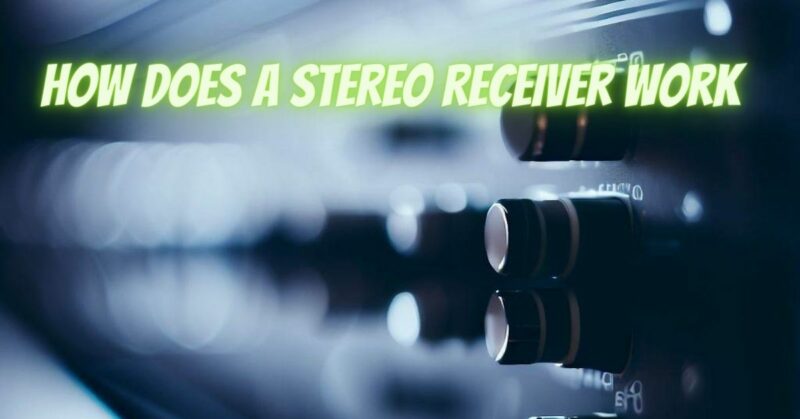A stereo receiver is a fundamental component of audio systems, serving as the heart of your setup. It combines various functions into a single unit, providing amplification, signal processing, and source selection capabilities. In this article, we will delve into the inner workings of a stereo receiver to help you understand how it functions and contributes to your audio experience.
- Amplification:
At its core, a stereo receiver includes an amplifier responsible for amplifying the audio signals. It takes low-level signals from audio sources such as CD players, media players, or turntables and increases their power to drive the speakers. The amplifier processes the signals, boosting their voltage and current levels to produce a robust and amplified audio signal that can be transmitted to the speakers.
- Preamplification:
In addition to amplification, a stereo receiver also incorporates a preamplifier stage. The preamplifier acts as the control center for your audio system, receiving signals from various sources. It performs essential tasks such as adjusting the volume, controlling tone (bass and treble), and selecting the desired input source. By adjusting these parameters, the preamplifier ensures that the audio signals are optimized and tailored to your preferences.
- Source Selection:
Stereo receivers offer the convenience of connecting multiple audio sources simultaneously. Whether it’s a CD player, DVD player, Blu-ray player, media streaming device, or even smartphones and tablets, the receiver allows you to switch between these sources effortlessly. Different input options, such as RCA, HDMI, optical, or coaxial, cater to various connection types, ensuring compatibility with a wide range of audio devices. This flexibility allows you to enjoy your preferred content from multiple sources through a single system.
- Signal Processing:
Depending on the model and features, stereo receivers may incorporate additional signal processing capabilities. These can include digital audio decoding, surround sound processing for home theater setups, and various sound enhancement features like equalizers or digital sound modes. These processing options enable you to customize the audio output according to your preferences or optimize it for specific listening environments.
- Speaker Outputs:
Stereo receivers provide dedicated outputs for connecting your speakers. These outputs can be in the form of speaker wire terminals, binding posts, or other types of connectors. You connect your speakers to these outputs, ensuring that the positive and negative terminals are correctly matched. The amplified audio signals from the receiver are then channeled through these outputs to drive the speakers and reproduce sound.
- Control and User Interface:
Stereo receivers feature intuitive controls and a user interface for easy operation. They typically incorporate knobs, buttons, and a display panel to navigate through different settings, select input sources, adjust volume levels, and access various audio features. Some models may even come with remote controls for convenient operation from a distance, enhancing user experience and accessibility.
Conclusion:
A stereo receiver serves as a central hub for your audio system, providing amplification, preamplification, source selection, signal processing, and speaker outputs. Understanding how a stereo receiver works enables you to optimize its capabilities and enhance your overall audio experience. By integrating multiple functions into a single unit, stereo receivers simplify audio setups and offer a convenient and versatile solution for enjoying high-quality sound reproduction.
Always refer to the specific user manual of your stereo receiver model for detailed instructions and to fully explore the unique features and capabilities it offers.


